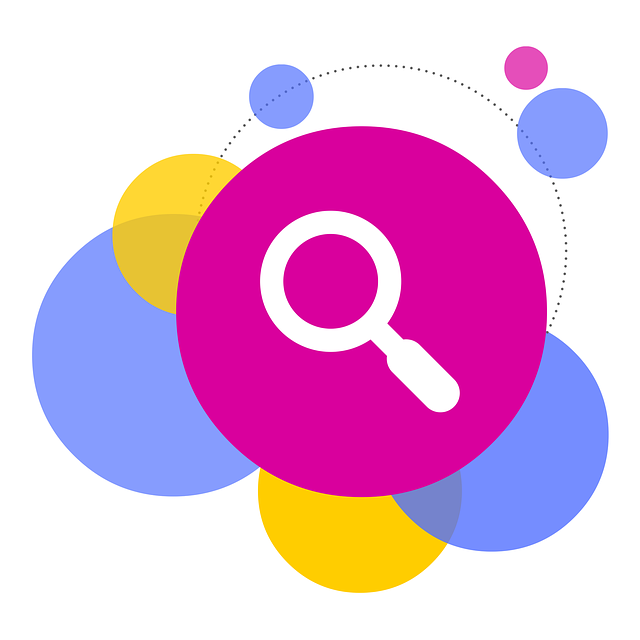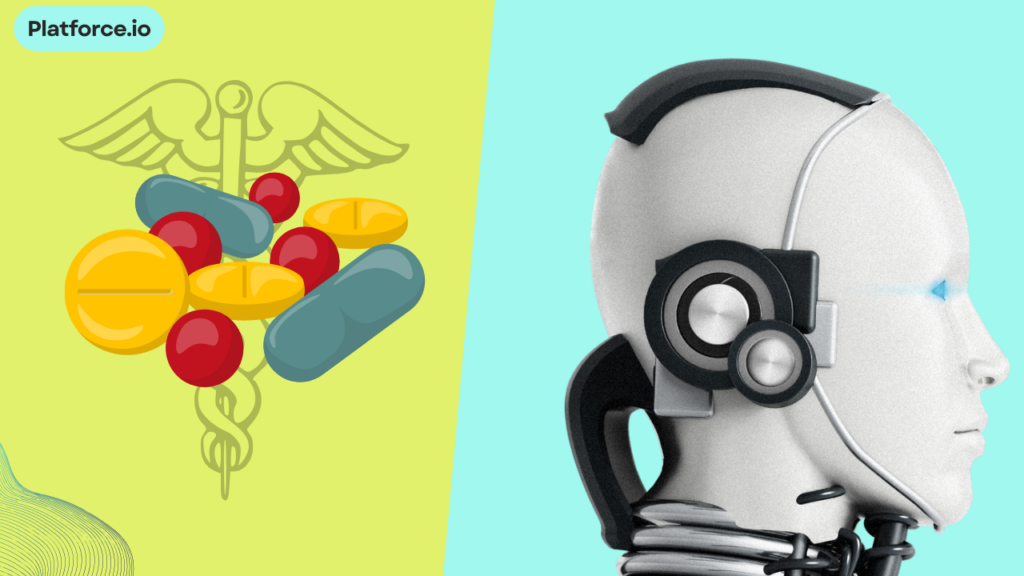- How Digitalization and Pharma CRM Improve the Pharmaceutical Manufacturing Industry?
- Don’t Confuse Digitizing With Being Truly Digital
- Elevating Returns on Digital Marketing Through AI
- A Solid Customer Experience Strategy Is Essential
- Leveraging Cloud Computing to Accelerate Drug Discovery
- From a Strong Product Focus to a Focus on CX and Pharma CRM
- Creating and Addressing Target Personas Is Essential
- Vaimo Helps With Your Pharma Digital Transformation
- Digitizing CX Means Better Analytics and More Data
- Enhancing Customer Facing Infrastructure Drives Business Results
- Case Studies: Successful Examples of Digital Transformation in the Pharmaceutical Industry
- Future Trends: Digital Transformation and the Future of the Pharmaceutical Industry
- MECO smartANALYTICS™ for Digitalization in the Pharma Industry
- Establish Your Leapfrog Innovation Value Streams and North Stars
- Frequently Asked Questions
How Digitalization and Pharma CRM Improve the Pharmaceutical Manufacturing Industry?
Digital transformation in the pharmaceutical industry means pharmaceutical companies can meet market demands with cutting-edge technologies, like pharma CRM. The pharmaceutical industry is undergoing a revolution due to digitalization, resulting in a more efficient, productive, and flexible process.
As a result of digital transformation, you can optimize processes and increase product quality by using data-driven decision-making. By capturing and analyzing real-time data from the manufacturing floor, you can detect and address issues earlier, reducing the risk of costly errors and recalls.
Secondly, automation and robotics are essential components of digitalization in pharmaceutical manufacturing. Technologies enable precise, high-throughput manufacturing methods that minimize the need for human intervention and result in more consistent products. As well as reducing the time and cost of repetitive tasks, robotic systems can also automate many other processes.
Next, digitalization enables a more connected and agile supply chain. Your inventory management can be optimized, shipments can be tracked, and communication with suppliers and distributors can be improved by leveraging digital platforms and real-time data exchange. Supply chain risks can be mitigated, and your operations can be more responsive when you have this level of connectivity and visibility.
In addition, digital technologies, such as the Industrial Internet of Things (IIoT), are revolutionizing manufacturing facility monitoring and management. Optimize resource utilization, reduce downtime, and increase equipment effectiveness by collecting, analyzing, and remotely controlling operations.
Lastly, digitalization empowers you to adopt Industry 4.0 practices, such as advanced analytics, artificial intelligence (AI), and smart manufacturing. These tools offer valuable insights and enhanced control over your manufacturing processes, enabling you to innovate and adapt to the rapidly changing pharmaceutical landscape continuously.
The pharmaceutical manufacturing industry must embrace digital transformation in order to succeed in the future. You can significantly improve your operations’ efficiency, flexibility, and competitiveness by leveraging the power of digital technologies.
Don’t Confuse Digitizing With Being Truly Digital

Understanding the difference between digitizing and becoming truly digital is crucial for the pharmaceutical industry. Digital transformation involves more than converting physical data and processes to digital formats. As an organization, you must transform your mindset and operations to become a digital organization.
As you work through your digital transformation, remember that integrating digital technologies into your operations, enhanced customer experiences, and innovative business models are equal and integral components of becoming a truly digital organization. The goal is not just to digitize processes; it’s also about delivering better products and services through technologies like AI, IoT, and data analytics.
Digitizing your operations in the pharmaceutical industry can help streamline processes, reduce manual errors, and improve overall efficiency. However, focusing solely on digitizing elements is insufficient to drive sustainable growth and stay competitive. Embracing a digital mindset requires a more strategic approach to capitalize on the potential of digital technology.
When planning your digital transformation, consider the following areas to ensure a comprehensive transformation journey:
Data management: Invest in robust data analytics capabilities to generate insights that drive smarter decision-making and optimization of processes.
IT infrastructure: Upgrade and modernize your IT systems to support the advanced technologies and applications required for digital optimization.
Workforce development: Equip your employees with the necessary digital skills, fostering a culture of innovation and collaboration.
Regulatory compliance: Stay current with evolving regulations and compliance requirements relating to digital technology adoption.
By not confusing digitization with being truly digital, you’ll have the opportunity to leverage the potential of digital transformation in the pharmaceutical industry. This will enable your organization to remain competitive, drive innovation, and deliver better customer outcomes.
Elevating Returns on Digital Marketing Through AI
In the pharmaceutical industry, digital transformation is becoming essential for businesses to stay competitive and relevant. One important area where these technologies can make a significant impact is digital marketing. Utilizing artificial intelligence (AI) in your digital marketing initiatives can elevate returns and increase efficiency and productivity.
AI can be highly effective in enhancing personalized marketing efforts. By analyzing vast amounts of data from various sources, algorithms can help you understand your target audience better and customize marketing content tailored to their preferences and needs. This targeted approach can yield higher engagement rates and improve conversion rates.
Your team can focus on more strategic initiatives when AI is incorporated into your digital marketing strategy. Automation can also speed up repetitive tasks. By reducing the amount of time your marketing team spends managing social media campaigns, email marketing, and content creation, AI-powered tools can boost efficiency and reduce costs.
As a pharma business, leveraging AI-driven insights in your digital marketing can also help you refine your products and services by identifying potential leads and understanding your customers’ pain points. Chatbots and virtual assistants can provide real-time interaction with your customers, allowing them to relay valuable feedback that helps you optimize your offering and cultivate strong customer relationships.
By harnessing the power of AI, your pharmaceutical brand can stay adaptive and dynamic in an ever-changing digital landscape. Embracing AI-driven digital marketing strategies not only adds value to your marketing campaigns but also equips you with the agility and flexibility required to navigate the pharmaceutical industry’s future.
A Solid Customer Experience Strategy Is Essential
As you navigate the future of digital transformation in the pharmaceutical industry, it’s crucial to prioritize the development of a robust customer experience (CX) strategy. This strategy should encompass your digital and human touchpoints to ensure a seamless and satisfying customer experience.
Pharmaceutics has benefited from digital transformation by collecting data on customer behaviours, preferences, and needs. The information you collect provides a chance to develop targeted and personalized marketing campaigns to keep your audience informed and engaged. Enhanced customer-facing infrastructure will drive better business results as your customers’ needs and expectations evolve.
Customer experience should be at the core of your digital transformation efforts. It is particularly important in the pharmaceutical industry, where clear communication and trust are critical to successfully adopting new products and services. Integrating a sound pharma CRM and digital technology into your CX strategy helps you better understand your customers, streamline processes, and ultimately improve the overall experience.
Consider the following aspects when implementing digital transformations in the pharmaceutical industry:
Creating and addressing target personas: Understand your specific customer segments and develop personas to focus your marketing and product development efforts.
Digitizing CX means better analytics and more data: Embrace digital tools and platforms to collect valuable customer data, informing future marketing campaigns and product innovations.
Enhancing customer-facing infrastructure with pharma CRM: Invest in innovative technology solutions that improve interactions with your customers, fostering loyalty and trust.
Focusing on integrations: Ensure that your digital channels, such as e-commerce, are fully integrated with your customer relationship management (CRM) systems for effective tracking and management of customer data.
By putting a solid customer experience strategy at the centre of your digital transformation efforts, you’ll strengthen your position in the competitive pharmaceutical industry landscape and create lasting, meaningful connections with your customers.
Leveraging Cloud Computing to Accelerate Drug Discovery
The pharmaceutical industry recently saw digital transformation’s importance in streamlining processes, improving efficiency, and reducing costs. Cloud computing is one of the most promising technologies that will revolutionize drug discovery.
Cloud computing can significantly accelerate drug discovery by storing and processing large amounts of data. Cloud computing enables real-time research collaboration by sharing datasets and machine learning (ML) models, reducing time-to-insight and accelerating decisions.
AI and ML algorithms extract data from a wide range of sources, such as genomics, proteomics, and high-throughput screening, with cloud-based solutions. A strong correlation between these advanced analytics and successful drug development can only be achieved because of the ability to predict drug candidates, identify molecular targets, and optimize new compounds.
Cloud computing can also improve high-performance computing (HPC) resource allocation efficiency. With cloud resources’ on-demand and scalable nature, you can easily scale up or down compute resources as needed. This elasticity can save you money by avoiding investing in expensive in-house hardware and the associated maintenance costs.
Tapping into cloud computing allows pharmaceutical organizations to explore novel therapeutic approaches and innovate faster. For instance, Bayer has partnered with Google Cloud to improve drug discovery by using their Tensor Processing Units (TPUs). Staying ahead in the competitive pharma market requires such collaborations.
Embracing cloud computing in the pharmaceutical industry can foster innovation, speed up discovery processes, and help you deliver novel medications to patients faster than ever before.
From a Strong Product Focus to a Focus on CX and Pharma CRM
Pharmaceutical companies must focus on customer experience (CX) and not just their products. You have to consider the future of digital transformation in this industry and adapt your strategies accordingly.
The development and marketing of pharmaceutical products have traditionally been major investments for pharmaceutical companies. In spite of this, the increasing importance of delivering a seamless, personalized customer experience cannot be overstated as the industry quickly evolves.
This transformation has been facilitated by digital technologies. Pharmaceutical companies are now able to better understand their customers through cloud computing, artificial intelligence (AI), and data analytics. Improving and enhancing your customer-facing infrastructure with the use of technology will garner better results for your business.
A solid customer experience strategy is essential to this transformation. By strategically implementing digital solutions, you can create targeted marketing campaigns, address different customer personas, and connect with healthcare professionals (HCPs) more meaningfully.
For instance, digital transformation can lead to better analytics and more data-driven insights. By digitizing your customer experience, you can track customer interactions, analyze their behaviour, and identify patterns to make data-backed decisions. This will help you offer your customers a more tailored and responsive experience, ultimately strengthening your relationship with them.
Focusing on customer experience should be at the forefront of your digital transformation efforts in the pharmaceutical industry. Cutting-edge technologies and implementing data-driven strategies will not only keep you ahead of the competition but also foster customer loyalty and satisfaction, ultimately driving your business forward.
Creating and Addressing Target Personas Is Essential
Digital transformation is changing the way companies approach their target audience. To effectively navigate this shift, you must create and address target personas. By understanding your target audience’s needs, preferences, and pain points, you can tailor your digital strategies to provide a personalized experience that will resonate with them.
You must first gather data about your customers and potential customers to create target personas. This can be achieved by analyzing customer interactions, conducting surveys, or utilizing market research. Once you have collected enough data, synthesize it into clear and concise personas, each representing a significant segment of your audience. Be sure to include relevant demographic details, behavior patterns, motivations, and goals for each persona.
By defining your target personas, you can better address their needs and preferences. Digital channels, such as websites, email campaigns, and social media platforms, offer personalized content and communication. These insights will let you send relevant messages and provide valuable information that meets each persona’s unique requirements and preferences.
Another crucial aspect of addressing target personas involves enhancing customer-facing infrastructure. This could involve streamlining processes or upgrading technologies to improve customer experiences. For example, investing in a user-friendly website with personalized recommendations or integrating chatbots for 24/7 customer support can significantly boost satisfaction among your target personas.
In summary, understanding and addressing target personas is essential to successfully navigating the future of digital transformation in the pharmaceutical industry. Creating well-defined personas and tailoring your digital strategies to meet their needs can enhance engagement, maximize satisfaction, and drive business results in the ever-evolving digital landscape.
Vaimo Helps With Your Pharma Digital Transformation
As you navigate the future of the pharmaceutical industry, digital transformation is a crucial aspect to consider. Digital Transformation in Pharmaceuticals involves leveraging modern technologies to optimize various aspects of business operations, from research and development to supply chain management.
Vaimo, an expert in helping businesses adapt to the digital landscape, can be your strategic partner in transforming your pharmaceutical company. With their comprehensive Consulting services, Vaimo provides a strategic plan covering all aspects of the customer journey, from acquisition to shipping. They work with you on strategic, tactical, and operational levels to create a tailored eCommerce strategy that suits your needs.
A few reasons to consider Vaimo for your Digital Transformation in the Pharmaceutical Industry are:
A Solid Customer Experience Strategy: Vaimo emphasizes the importance of a seamless customer experience. Good customer experience strategies lead to better analytics, more data, and improved business results.
Creating and Addressing Target Personas: Understanding and catering to your target audience is essential in the digital era. Vaimo can help you identify and address your target personas effectively, ensuring your company gains a competitive edge.
Enhancing Customer-Facing Infrastructure: By updating your customer service channels and implementing modern user interface designs, Vaimo can help improve your company’s customer interactions. This enhancement ultimately results in better customer satisfaction and increased revenue.
Embracing Automation and Robotics: Vaimo guides adopting automation solutions and robotic technologies, which will streamline your workflows, reduce costs, and improve efficiency and productivity.
Adapting to the evolving digital world requires ongoing digital transformation and is not a one-and-done game. With the assistance of Vaimo, you can equip your pharmaceutical company to seamlessly transition into the digital era and maintain a competitive edge in the industry.
Increased Visibility
Digital transformation is revolutionizing the pharmaceutical industry by increasing visibility throughout the supply chain, enabling more informed decisions. By leveraging digital technologies, you can effectively monitor and track various aspects of your supply chain, enhancing efficiency and productivity.
Digitalization in the pharmaceutical industry empowers you to integrate your supply chains fully. Doing so lets you see what’s happening in your operations more clearly and respond more quickly as market demands change.
Digital technologies like big data analytics, the Internet of Things (IoT), and cloud computing can give you a comprehensive view of your supply chain. This increased visibility extends to your supplier base, providing valuable insights to better manage risks and build resilience.
As pharmaceutical companies compete fiercely in today’s market, they face a range of unique challenges. The need for streamlined processes and increased transparency has never been greater. As a result, digitalization plays a crucial role in improving your manufacturing processes and enabling adaptive operations.
Here are some key benefits of increased visibility through digital transformation in the pharmaceutical industry:
Cost reduction: Digital solutions help you optimize and automate various processes, cutting down on operational costs and minimizing waste.
Improved efficiency: With real-time data at your fingertips, you can make quicker and smarter decisions, thus enhancing the overall efficiency of your supply chain operations.
Flexibility to change: As external factors shift, your need for adaptability increases. Digital transformation equips you with the right tools to be agile and responsive.
Embracing digital transformation and harnessing its potential places your company in a stronger position to navigate the complexities of the pharmaceutical industry and maintain its competitive edge. Increased visibility throughout your supply chain operations is just one of the critical aspects of this journey.
Digitizing CX Means Better Analytics and More Data
Digital transformation can significantly enhance customer experience (CX) by providing better analytics and more data. When you implement digital solutions, you streamline customer interactions and gather valuable insights to inform strategic decision-making.
With the digitization of CX, you will put a multitude of tools and technologies to work collecting and analyzing customer data. This will show you any gaps in the customer journey, understand their patterns and preferences, and create better customer experiences. You’ll also find opportunities for engagement with your target audience by analyzing data from your customers’ use of mobile apps or their interaction with your support channels, for example.
You can also segment customers using advanced analytics based on their demographics, health conditions, or treatment histories. By tailoring your products and services, marketing campaigns, and other communication initiatives to each segment, you can meet their specific needs. This targeted approach helps foster stronger relationships with your customers and build trust in your pharmaceutical brand.
Moreover, digitizing CX provides additional benefits, such as reducing manual efforts and errors in customer service. By automating processes and incorporating self-service options, you can enable customers to access information, order products, or manage prescriptions at their convenience, thus creating a seamless and efficient experience.
Embracing digital transformation in the pharmaceutical industry can significantly improve customer experience by providing better analytics and more data. By adopting digital tools, you can gather valuable insights, offer personalized experiences, and ultimately drive business growth.
Higher Product Quality
You should understand how digital transformation can lead to higher product quality as you navigate the future of digital transformation in the pharmaceutical industry. In order to improve profitability, progress, and quality, digitalization plays a crucial role in manufacturing processes.
Embracing digital quality management is transforming pharma manufacturing, allowing companies to become more competitive globally and cater to patients’ needs. The adoption of Industry 4.0 technologies, such as connectivity, advanced analytics, robotics, and automation, is anticipated to revolutionize elements of pharmaceutical manufacturing within the next five to ten years.
Focusing on Good Manufacturing Practices (GMP) during digitalization is essential. By prioritizing GMP, both in embracing opportunities and addressing challenges, you can ensure that higher standards of quality are maintained throughout the process.
Learning from leading tech companies and adapting their approaches to developing digital products, personalizing customer engagement, harnessing new types of data, and deploying intelligent automation will enhance overall product quality.
Working more agile will allow your pharmaceutical company to adapt to the ever-changing landscape and foster a culture of continuous improvement, ultimately resulting in higher product quality and better patient outcomes.
When you use digital transformation in pharmaceuticals, you’re embracing a more efficient and streamlined manufacturing process and ensuring higher product quality that positively impacts your company and the patients you serve.
Competitive Advantages
By embracing digital transformation in the pharmaceutical industry, you can gain a competitive advantage in various areas. Utilizing advanced software applications for planning, scheduling, and batch records will help fill gaps in invaluable data. This data can be collected, analyzed, and used to improve outcomes, ultimately giving your organization an edge over competitors.
Another key aspect of digital transformation in the pharmaceutical industry is determining your cloud strategies early on. Moving to the cloud allows for universally available data storage and exponentially growing computing power. This can streamline operations, reduce costs, and increase efficiency across the organization.
The abundance of machine learning and artificial intelligence (AI) is powering the digital transformation. When incorporated effectively, AI can accelerate the drug development process, improve knowledge management, and enhance data security. Not only does this make your organization more competitive, but it also contributes to reducing drug time to market.
It’s crucial to acknowledge the importance of people in driving digital transformation. Your organization will be more agile and innovative if your workforce embraces these technological advancements. It will be easier for your company to adapt to an ever-evolving pharmaceutical landscape if you cultivate a culture that values technological growth and continuous learning.
Through digital transformation, you can enhance your competitive advantage in the pharmaceutical industry by improving data collection and analysis, leveraging cloud computing, harnessing AI, and fostering a learning culture. Keep both opportunities and challenges in mind as you approach the process.
Enhancing Customer-Facing Infrastructure Drives Business Results
Enhancing customer-facing infrastructure is a key aspect of digital transformation. By adopting digital technologies and tools, you can improve customer experience and ultimately drive better business results. Here are a few ways in which digital transformation in the pharmaceutical industry can lead to positive outcomes:
Harnessing Data Analytics: Digital transformation allows you to collect, analyze, and leverage valuable data from different touchpoints of your customers’ journey. The data gives you a chance to make well-informed decisions and generate product offerings and services to meet target customers’ needs and preferences.
Personalizing Customer Experience: When you know your customers’ personas and behavior, digital transformation affords you the ability to create a more personalized and engaging experience for them. This leads to improved customer satisfaction, increased loyalty, and higher revenue from repeat customers. Loyal customers tend to spend 67% more than new ones.
Streamlining Operations: Digital transformation also helps streamline various aspects of your operations, such as product development, marketing, sales, and customer service. By automating tasks and embracing digital solutions, you will improve efficiency and reduce operational costs, driving better financial results for your organization.
For pharmaceutical companies to remain competitive, upgrading their customer-facing infrastructure is critical. Strengthening your customer relationships and setting your business on the path to long-term success can be achieved with the benefits of digital transformation.
Case Studies: Successful Examples of Digital Transformation in the Pharmaceutical Industry
Understanding the real-life applications and successes of the pharmaceutical industry’s digital transformation is essential for gaining a deeper understanding of this field. An overview of digital transformation’s positive impacts on the industry is presented below.
Case Study 1: One of the top five pharmaceutical companies looked to boost their new lung cancer therapy by raising awareness of their innovative treatment. By embracing digital transformation, they incorporated advanced data analytics and focused on digital marketing tactics to help achieve their goal. The results showcased the power of using digital means to raise global awareness for essential pharmaceutical solutions.
Case Study 2: Process efficiency and agility have significantly improved through digital transformation. Advanced analytics, sensors, and automation of complex decision-making have led to remarkable enhancements in efficiency, speed, quality, and responsiveness within the industry. This shift has also reduced costs and increased productivity for pharmaceutical companies.
Case Study 3: Another success story features a pharmaceutical company implementing digital transformation technologies to enhance drug development. The company accelerated the development timeline of new drugs by using advanced simulations, machine learning, and predictive analytics, thus contributing to saving lives and generating substantial cost savings.
As you can see, digital transformation in the pharmaceutical industry has offered countless opportunities to drive growth and create a more efficient, patient-centric approach. By understanding and applying these successful examples, you can continue navigating the exciting and evolving terrain of digital transformation within your pharmaceutical endeavours.
The Challenges and Opportunities of Digital Transformation in Pharmaceuticals

Challenges and opportunities abound because of the digital transformation in the pharmaceutical industry. Pharmaceutical operations constantly evolve, so understanding and adapting to these changes is essential.
Pharmaceuticals are no exception to the impact of digitalization on the healthcare industry. Using robotics, automation, and computerization facilitates cost reduction, increased efficiency, and improved productivity. With new technologies and innovations emerging, you can improve medicine development, patient care, and overall adaptability to changes.
This wave of digital transformation comes with its own set of challenges. Keeping up with technological advances remains one of the biggest obstacles. Adopting new and better practices and implementing new solutions can be time-consuming and resource-intensive. A connected digital ecosystem also poses regulatory challenges. Maintaining data security and privacy is paramount for pharmaceutical companies to remain compliant.
Despite that, there are many opportunities for growth and improvement. Digital tools and technologies, for instance, help pharmaceutical stakeholders collaborate more effectively. This leads to streamlined operations that benefit patients, healthcare providers, and pharmaceutical companies.
Data analytics also help organizations improve their decision-making processes. A company can improve its drug development processes, optimize supply chain management, and enhance its overall performance by integrating and analyzing data from a variety of sources.
Embracing digital transformation in the pharmaceutical industry presents challenges and growth opportunities. Understanding and adapting to these aspects will help your organization thrive in the future. You can benefit from the digital revolution in pharmaceuticals if you have a well-thought-out digital strategy and a commitment to continuous improvement.
Future Trends: Digital Transformation and the Future of the Pharmaceutical Industry
As technology advances and efficiency demands increase, the pharmaceutical industry is constantly evolving. Industry futures will be shaped by factors including interoperable data, artificial intelligence (AI), and open, secure platforms. A few key trends are as follows:
Increased adoption of AI and machine learning: These technologies will improve drug discovery, optimize manufacturing processes, and enhance clinical trials. With AI, you can expect faster, more accurate predictions and reduced costs throughout the pharmaceutical value chain.
Data-driven decision-making: As digital transformation progresses, collecting, analyzing, and using massive amounts of data become increasingly effective. This data-focused approach enables better-informed decisions, improved patient care, and efficient business operations.
Connected healthcare: Connected devices and the Internet of Things (IoT) have revamped patient care. As remote monitoring and telemedicine become more and more common, treatment plans can now be adjusted in real-time, providing a personalized approach to healthcare.
Virtual and augmented reality: These technologies will play a critical role in many aspects of pharmaceuticals. They will enhance patient education to improve training and collaboration among healthcare professionals. Virtual and augmented reality can provide immersive, interactive experiences that improve patient outcomes and retention of information.
Focus on cybersecurity: Protecting patient data and proprietary information is becoming increasingly important as the pharmaceutical industry undergoes digital transformation and becomes more connected. Careful cybersecurity measures will ensure stakeholders’ safety and privacy.
Pharma companies must embrace digital trends and recognize the potential of digital transformation in this ever-changing field. Keeping up with current trends and the ability to adjust to constant shifts position you to provide patients with the best possible care and drive innovation in the field.
MECO smartANALYTICS™ for Digitalization in the Pharma Industry
As you navigate the future of digital transformation in the pharmaceutical industry, one of the tools that can significantly enhance your operations is MECO smartANALYTICS™. This platform seamlessly integrates with your existing MECO system and offers valuable insights into various aspects of your production process.
The installation of MECO smartANALYTICS™ is straightforward and requires upgrading your current MECO system with a combination of hardware and software packages. This versatile platform collects and records crucial data on process parameters like temperatures, pressures, vibrations, flow rates, frequencies, voltage, and amperage.
By leveraging MECO smartANALYTICS™ in your pharmaceutical operation, you can benefit from:
Real-time monitoring: As a result of the platform’s real-time data, you can make informed decisions and identify and resolve any issues that may arise quickly.
Enhanced efficiency: By extensively utilizing digital technologies at all levels of operations, MECO smartANALYTICS™ helps to increase efficiency and productivity in your pharmaceutical manufacturing setup.
Cost reduction: Using robotics, automation solutions, and computerization can help reduce costs associated with manual labour and material wastage.
Flexibility: The digital transformation in the pharmaceutical industry requires adaptability, and MECO smartANALYTICS™ supports this by helping you adjust to new market trends and upcoming demands.
Utilizing MECO smartANALYTICS™ in your digital transformation journey can significantly improve your pharmaceutical manufacturing capabilities and position you as an industry leader in the digital age.
Establish Your Leapfrog Innovation Value Streams and North Stars
Digital transformation plays a significant role in streamlining processes, enhancing innovation, and staying competitive in the pharmaceutical industry. Establishing your leapfrog innovation value streams and North Stars is essential to this transformation journey.
How Will You Develop the Innovation Portfolio?
Start by setting up North Stars for digital innovation in each functional area, such as patient-centred and seamless development. These North Stars should connect to your overarching enterprise-wide digital ambitions, such as faster time to market.
To develop your innovation portfolio, follow these steps:
Identify value streams: A value stream is a series of actions that create and deliver value to the customer or the end-user. Map the value streams in your organization and determine how digital transformation can improve each value stream.
Create a key capabilities map: Identify the key capabilities required to support your digital innovation initiatives. This map will provide a high-level view of the resources and skills needed across your organization.
Define the key capabilities: Clearly define the roles, responsibilities, and key performance indicators (KPIs) for each capability. This will ensure alignment across the organization and enable you to measure progress.
Prioritize digital initiatives: Prioritize the digital initiatives in your portfolio based on their potential impact on your North Stars and their alignment with your overall business strategy.
Execute and iterate: Implement the digital initiatives, track their progress, gather feedback, and iterate to ensure continuous improvement. The digital transformation journey is not a one-time event but an ongoing process of constant evolution.
Establishing your leapfrog innovation value streams and North Stars will lay the foundation for a successful digital transformation journey in the pharmaceutical industry. Following these principles will let you deliver innovative solutions and achieve long-term strategic goals.
Frequently Asked Questions
What are the key drivers for digital transformation in pharma?
Several factors are driving digital transformation in the pharma industry. They include the need for faster, more efficient drug discovery, increased competition, and an evolving patient-centric healthcare environment. COVID-19 also pushed companies to adopt cutting-edge technology to improve their products, services, and operational efficiency.
How can pharma companies use AI to enhance drug discovery?
Pharma companies can use artificial intelligence (AI) to streamline drug discovery processes because it reduces the need for costly and time-consuming experiments and clinical trials. AI algorithms also predict which molecules might have therapeutic potential, analyze large volumes of data, identify patterns, and generate predictions on drug efficacy and safety. By implementing AI-based technologies, pharma companies can save time and resources while potentially uncovering new drug candidates that may have been overlooked using traditional methods.
What role does big data play in pharmaceutical innovation?
Big data plays a crucial role in pharmaceutical innovation by identifying areas for improvement in drug development. Advanced analytics lets pharmaceutical companies discover hidden correlations, predict patient responses to drugs, and optimize development and manufacturing processes using enormous amounts of data generated from clinical studies, real-world patient data, and genomics, among other sources.
How is Industry 4.0 revolutionizing the pharmaceutical supply chain?
Through adopting cyber-physical systems, IoT, and cloud computing, Industry 4.0 is transforming industries digitally. Pharma companies can benefit from Industry 4.0 by improving visibility, automating processes, and optimizing supply chains. Companies can improve efficiency by using smart sensors and advanced data analytics to identify bottlenecks, monitor production in real time, and identify bottlenecks early on. The result is less waste, reduced costs, and a more agile supply chain that can adapt to changing market conditions.
What cybersecurity challenges do pharma companies face in digital transformation?
Cybersecurity threats are becoming increasingly prevalent as the pharmaceutical industry adopts more digital technologies. Data compromise, critical system disruption, and patient safety are all adverse effects of cyberattacks. Pharma companies face challenges in securing their decentralized networks, protecting intellectual property, and ensuring compliance with strict regulations. To mitigate these risks, companies need to prioritize cybersecurity in their digital transformation strategies and invest in robust infrastructure, employee training, and collaboration with security experts.
How can digital solutions help improve patient engagement and adherence?
Various digital solutions, including mobile apps, wearables, and telehealth platforms, can be used to manage health conditions conveniently and personally. A more proactive approach to patient care is possible with timely reminders, online educational resources, and remote communication with healthcare professionals. Patients and healthcare professionals can also make informed decisions about their treatment plans with the help of these digital tools, which can track medication usage and adherence.
Try out our demo today to know if Platforce suits your needs! Also, check out our YouTube channel and LinkedIn page to follow our updates and learn more about our services.


























